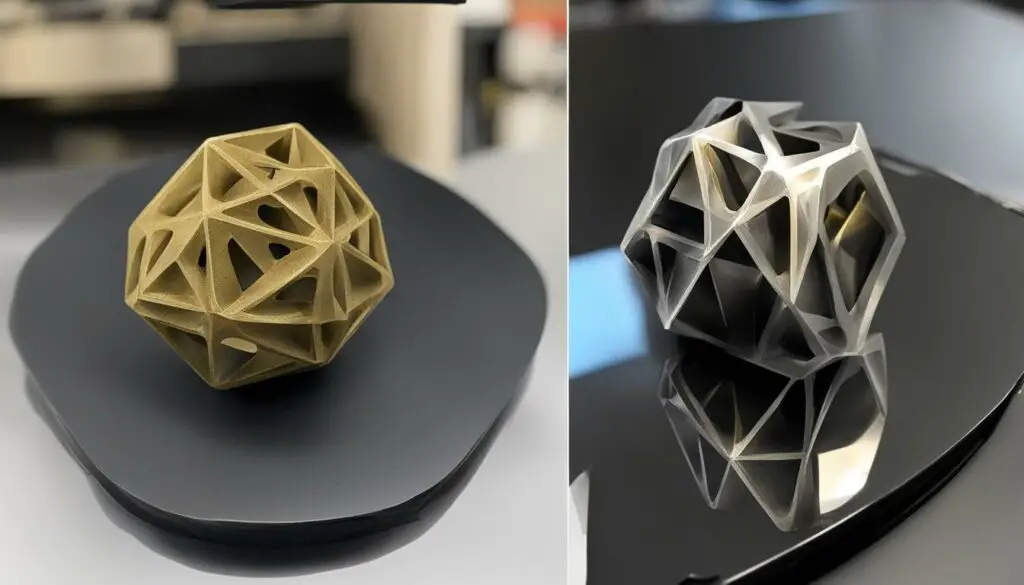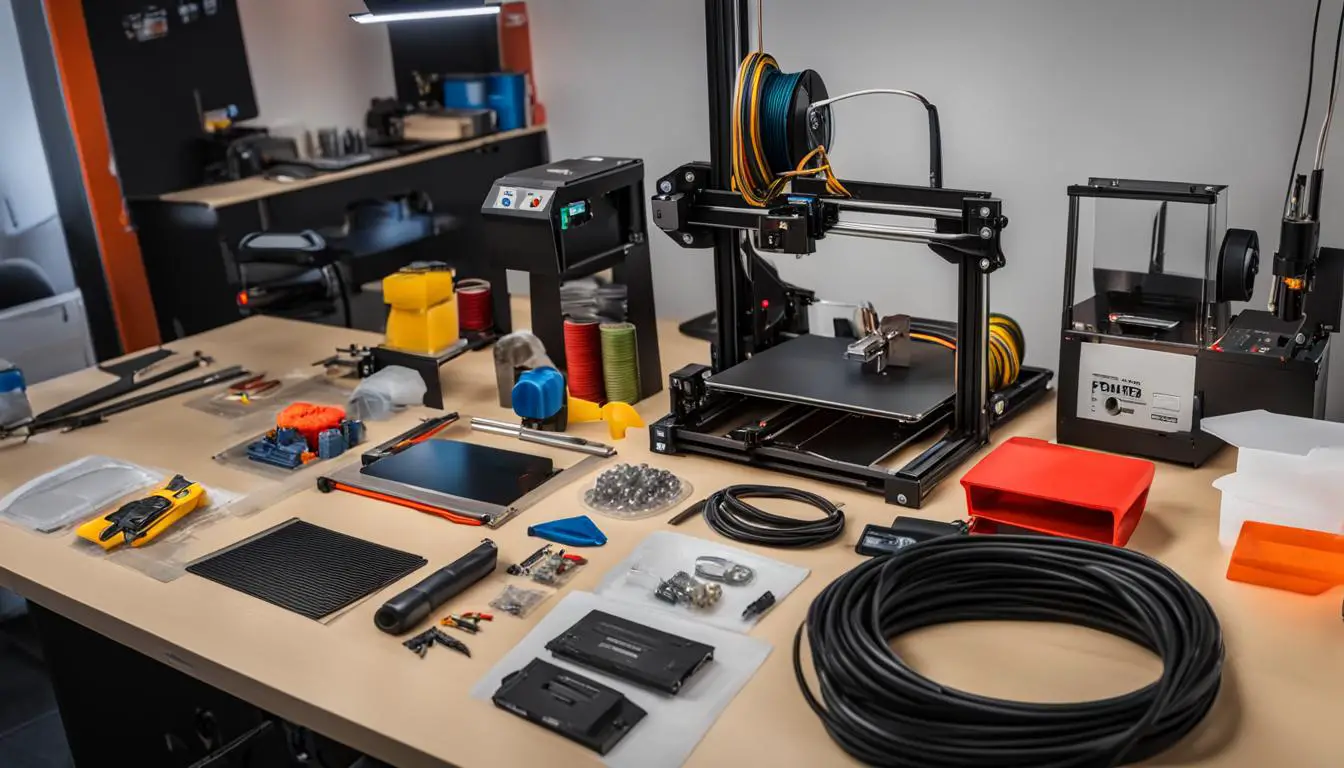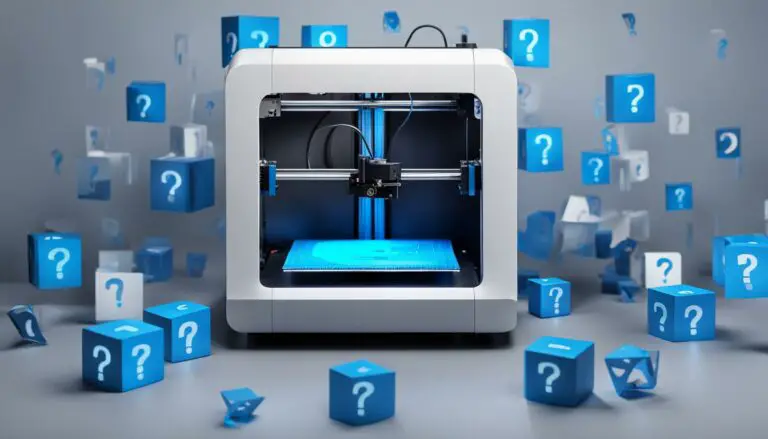How To Master P1P 3D Printer In Easy Steps
Originally posted on December 6, 2023 @ 11:40 am
This piece will delve into the P1P 3D printer, a budget-friendly and multipurpose device that utilizes groundbreaking technology to produce top-notch prints. Whether you’re a novice or a seasoned pro, we provide straightforward instructions to assist you in mastering this user-friendly and effective 3D printer.
Key Takeaways:
- Learn how to tune filaments for optimal print quality with the Bambu Lab X1C and P1P 3D printers.
- Discover the challenges of using generic filament profiles and the importance of fine-tuning them for specific filaments.
- Unlock the full potential of your prints by understanding the impact of print speed, flow rate, and layer time.
- Explore the process of calibrating the maximum volumetric speed and why it’s crucial to find the right balance.
- Understand why temperature tower calibration may not be necessary and how flow rate consistency plays a key role in print quality.
Ready to dive into the world of precision 3D printing with the P1P? Let’s get started!
The Slicer Profile Problem
When using the Bambu Lab X1C and P1P 3D printers, it’s important to address the slicer profile problem. Bambu Studio and Orca Slicer come with pre-tuned filament profiles designed specifically for Bambu filaments. While these profiles work well with Bambu filaments, they may not provide optimal results with filaments from other manufacturers.
Table:
| Filament Profiles | Slicer Software |
|---|---|
| Bambu Filaments | Bambu Studio |
| Other Filaments | Orca Slicer |
By using generic filament profiles in the slicer, you may encounter challenges such as inconsistent flow rate and subpar print quality. To overcome this issue, it’s essential to fine-tune the slicer profiles for the specific filaments you’re using. This involves adjusting the flow rate and speed settings to achieve consistent and smooth prints.
Remember to experiment with different settings and test print results to find the optimal slicer profile for each filament. Finding the right flow rate and speed settings will ensure that you achieve the best possible print quality with your Bambu Lab printers.
Uncap the Speed
When it comes to 3D printing, speed matters. But did you know that the maximum volumetric speed set in your slicer can significantly impact the print quality? Limiting the volumetric speed may result in inconsistent flow rate and wall finish variation, leading to subpar prints. To unlock the full potential of your P1P 3D printer, it’s crucial to understand the relationship between print speed, flow rate, and layer time.
Let’s start by delving into the role of maximum volumetric speed. This setting determines how much filament is extruded per second, affecting the flow rate during printing. By increasing the maximum volumetric speed, you can achieve a smoother and more consistent flow of filament, resulting in improved print quality. However, be cautious not to set it too high, as it may lead to filament melting issues and compromise print accuracy.
To further optimize your prints, consider adjusting the layer time setting. Layer time refers to the duration each layer takes to solidify before the next one is printed. By finding the right balance between layer time and print speed, you can avoid issues like insufficient cooling or underextrusion. Experiment with different settings to achieve the desired print quality, ensuring each layer has adequate time to cool and solidify properly.
| Print Parameter | Effect |
|---|---|
| Maximum Volumetric Speed | Controls filament flow rate |
| Layer Time | Affects cooling and solidification |
Remember, finding the right balance between print speed, flow rate, and layer time is key to achieving optimal print results. Fine-tuning these parameters will help eliminate inconsistencies and improve the overall print quality of your P1P 3D printer.
Volumetric Speed Calibration: Achieving Optimal Print Settings
When it comes to achieving the best print quality with your P1P 3D printer, one crucial aspect to consider is volumetric speed calibration. This process involves fine-tuning the maximum flow rate of filament in order to optimize your print settings. By calibrating the volumetric speed, you can ensure consistent extrusion and precise printing, leading to superior print results.
To begin the volumetric speed calibration process, it is important to first determine the maximum flow rate that your printer can handle. This value, also known as the “Max Flowrate,” represents the maximum amount of filament that can be extruded per second. By finding the appropriate Max Flowrate for your printer, you can avoid flow rate limitations that may result in under-extrusion or over-extrusion issues.
To calibrate the volumetric speed, you can utilize the calibration tab in the Orca Slicer software. This tab allows you to test the flow rate of different filaments and adjust the Max Flowrate accordingly. It is important to consider other slicer settings, such as layer height, layer width, print speed, and print temperature, during the calibration process to achieve optimal performance.
| Calibration Steps: | Recommendations: |
|---|---|
| 1. Select a filament type and load it into the printer. | Use high-quality filaments that are compatible with your printer for accurate calibration. |
| 2. Access the calibration tab in the Orca Slicer software. | Ensure you have the latest version of the software installed for optimal performance. |
| 3. Follow the instructions provided in the Orca Slicer software to test the flow rate. | Perform multiple tests with different flow rates to determine the optimal value. |
| 4. Adjust the Max Flowrate setting based on the results of the flow rate tests. | Incrementally increase or decrease the Max Flowrate until you achieve consistent extrusion. |
| 5. Fine-tune other slicer settings, such as layer height and print temperature, if necessary. | Ensure all settings work harmoniously to produce the desired print quality. |
It is important to note that while calibrating the volumetric speed, you should avoid pushing the Max Flowrate beyond the recommended range. Doing so may result in filament melting issues or compromised print quality. By following these steps and considering the recommendations, you can achieve optimal print settings for your P1P 3D printer and produce remarkable prints with precision and consistency.
Temperature Tower Calibration is Useless
When it comes to achieving optimal print quality with your P1P 3D printer, temperature control plays a crucial role. Traditionally, temperature tower calibration has been a popular method for finding the ideal temperature for a filament. However, we argue that this approach is not necessary for the Bambu Lab printers.

Table: Summary of 3D Printing Tips
| Tip | Description |
|---|---|
| Fine-tune filament profiles | Adjust slicer profiles for specific filaments to optimize print quality |
| Adjust flow rate and speed settings | Find the right flow rate and speed settings for each filament type to achieve consistent and smooth prints |
| Balance maximum volumetric speed with layer time | Ensure the right combination of maximum volumetric speed and layer time for consistent flow rate and flawless print finish |
Resuming a Failed 3D Print: Tips and Tricks
In the exciting world of 3D printing, a failed print can be frustrating and result in wasted time and materials. However, there are techniques you can use to salvage a failed print and resume its progress. In this section, we’ll explore some practical tips and tricks for resuming a failed 3D print, saving you both time and resources.
One key aspect of resuming a failed 3D print is keeping the print attached to the print bed. This ensures that the position of the print remains unchanged, making it easier to resume printing at the correct height. Additionally, measuring the height of the failed part is crucial. This can be done using a pair of calipers or a ruler. By accurately measuring the height, you can modify the G-code file to resume printing at the exact point where the failure occurred.
To modify the G-code file, you will need to locate the layer at which the failure occurred and insert the necessary commands to continue the print. This may involve adjusting the Z-axis position and setting the extruder temperature appropriately. It’s important to note that modifying the G-code file requires some knowledge of G-code commands and the structure of the file, so it’s recommended to follow a guide or tutorial to ensure accurate modifications.
If homing is not possible after a print failure, there are alternative methods to consider. One option is to manually adjust the positions of the print bed and nozzle to align them correctly. This may involve using the printer’s control panel or interface to move the axes manually. Another option is to use a third-party software tool to modify the G-code file and specify the desired starting position. These alternative methods can be useful when the printer is unable to home automatically after a failure.
Summary:
- Keep the print attached to the print bed to maintain its position.
- Measure the height of the failed part accurately to resume printing at the correct height.
- Modify the G-code file by locating the layer where the failure occurred and adjusting the necessary commands.
- Consider alternative methods if homing is not possible, such as manually adjusting the positions or using third-party software.
| Recovery Method | Advantages | Disadvantages |
|---|---|---|
| Keeping the print attached to the print bed | – Maintains the position of the print – Allows for accurate measurement of failure height |
– Limited by the size of the print bed – Requires careful handling to prevent damage |
| Modifying the G-code file | – Provides precise control over resume position – Can be done with basic knowledge of G-code |
– Requires understanding of G-code structure – Prone to human error when modifying the file |
| Alternative methods if homing is not possible | – Enables resume printing without automatic homing – Provides flexibility in adjusting positions |
– Requires manual adjustment or third-party software – May require additional setup and configuration |
By utilizing these tips and tricks, you can increase your chances of successfully resuming a failed 3D print. Remember to always practice caution and take your time when making modifications to the G-code file. With some patience and perseverance, you’ll be able to salvage prints that would have otherwise been considered a loss.
Conclusion
In conclusion, mastering the P1P 3D printer is essential for improving your 3D printing skills and achieving efficient and high-quality prints. By fine-tuning the filament profiles, flow rate, and slicer settings, you can optimize the performance of your printer and produce outstanding results.
Throughout this article, we have provided you with valuable tips and tricks to help you along your 3D printing journey. We have emphasized the importance of understanding the relationship between slicer settings and print quality, encouraging you to experiment and fine-tune your settings to achieve optimal performance.
Print Chomp is committed to providing you with practical guidance and in-depth reviews to enhance your printing experience. We believe that with the right knowledge and techniques, you can master the P1P 3D printer and unlock its full potential. So, go ahead and apply what you have learned to take your 3D printing skills to the next level!
FAQ
Can I use aftermarket filaments with the Bambu Lab X1C and P1P 3D printers?
While using aftermarket filaments is possible, it may result in print quality issues. It is recommended to properly tune the filaments in Bambu Studio or Orca Slicer to achieve optimal results.
Are the pre-tuned filament profiles in Bambu Studio suitable for all filaments?
The pre-tuned filament profiles in Bambu Studio are specifically designed for Bambu filaments. For optimal results with filaments from other manufacturers, fine-tuning the profiles based on specific filaments is recommended.
How does maximum volumetric speed affect print quality?
Limiting the maximum volumetric speed can result in inconsistent flow rate and wall finish variation. Adjusting the maximum volumetric speed and layer time settings can improve print results and eliminate inconsistencies.
How can I calibrate the maximum volumetric speed?
You can use the calibration tab in Orca Slicer to test the flow rate and determine the optimal value for the maximum volumetric speed. Consider other slicer settings such as layer height, layer width, print speed, and temperature when calibrating the volumetric speed.
Is temperature tower calibration necessary for the Bambu Lab printers?
Temperature tower calibration is not necessary for these printers. Flow rate consistency is more important for achieving good print quality. Focus on fine-tuning the flow rate and other slicer settings instead of relying solely on temperature calibration.
What are some tips for resuming a failed 3D print?
To resume a failed print, it is important to keep the print attached to the print bed and measure the height of the failed part. Modify the G-code file to resume printing at the correct height. Alternative methods for resuming a print are provided if homing is not possible.








